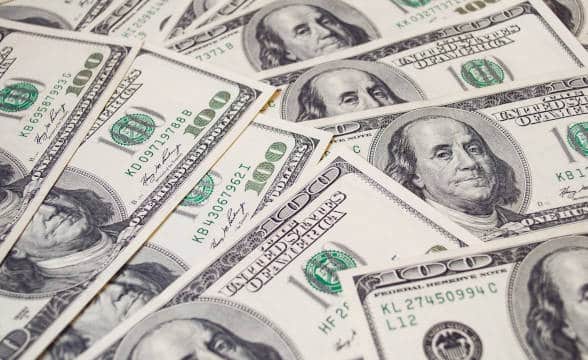- Casino
- By State
- Alabama
- Alaska
- Arizona
- Arkansas
- California
- Colorado
- Connecticut
- Delaware
- Georgia
- Florida
- Hawaii
- Idaho
- Illinois
- Indiana
- Iowa
- Kansas
- Kentucky
- Louisiana
- Maine
- Massachusetts
- Maryland
- Michigan
- Minnesota
- Mississippi
- Missouri
- Montana
- Nebraska
- Nevada
- New Hampshire
- New Jersey
- New Mexico
- New York
- North Carolina
- North Dakota
- Ohio
- Oklahoma
- Oregon
- Pennsylvania
- Rhode Island
- South Carolina
- South Dakota
- Tennessee
- Texas
- Utah
- Vermont
- Virginia
- Washington
- West Virginia
- Wisconsin
- Wyoming
- By State
- Slots
- Poker
- Sports
- Esports
GBP Collapsed to All-Time Low amid Broader USD Strength

Financial markets like consistency and when institutions in a country do not operate on the same wavelength and send mixed signals, they react chaotically and it is the currency of the country that falls victim, confirmed by recent developments around the British pound.
The Pound Collapse
The GBP fell to an all-time low of 1.0327 against the USD in the early morning trading session Monday as a result of the historic tax cuts and huge increases in borrowing announced by the Chancellor of the Exchequer Kwasi Kwarteng as part of the new government’s plan to double economic growth.
Scrapping the country’s top rate of income tax and the planned rise in corporate taxes, and the biggest increase in borrowing since 1972 just a day after the Bank of England (BoE) announced a rate hike to counter inflation resulted in investors dumping short-term government bonds and the pound plummeted by 3.6% against its US counterpart to levels unseen in over three decades.
But the biggest drop happened on Monday when sterling lost another 4.9% against the USD during Asian trading to hit an all-time low before recovering slightly on fear of BoE intervention.
The pound also lost ground against the euro, briefly hitting 0.9277, a level that was last seen in September 2020, before pulling back to close the day below the 0.90 mark.
Arguing that the markets lost confidence in the credibility of the Truss administration, analysts at some of the largest investment banks commented that the BoE may have to tighten rates aggressively again in the coming meeting in November.
Broad Dollar Strength
Propelled by the collapse of the pound, the dollar registered a 20-year low against the euro of 0.9528 and 20-year highs against a basket of six peer currencies.
Against the Japanese yen, the dollar firmed just under the 24-year high of 145.9 registered on Friday which forced the Bank of Japan to intervene for the first time in more than 20 years. According to estimations provided by Tokyo money market brokerage firms, the bank spent about $25 billion to bring the exchange rate to 140.31 later in the day.
Against China’s offshore yuan, the dollar registered a new high of 7.1728, the highest since May 2020, while the onshore yuan sunk to a 28-month low of 7.1690, despite actions from the PBOC to reinstate foreign exchange risk reserves for some forward contracts to make selling the yuan more expensive and slow down its depreciation.
The Australian dollar did not go unscathed by the relentless dollar rally and the risk-sensitive currency touched 0.6438 to register its lowest since May 2020.
The dollar rally is threatening riskier assets according to strategists at Morgan Stanley who predicted in a note on Monday that the pressures from the dollar strength will send the S&P 500 to a new bear market with lows of between 3000 and 3400 by early 2023.
The collapse has naturally impacted British customers’ ability to participate in online gambling. With costs of living mounting and consumers squeezed by a resurging dollar and high energy bills, it’s likely that the industry will take a downturn in the United Kingdom over the coming months. At the same time, customers based in the United States, who may still be playing offshore, could see that a resurgent US dollar is actually helping them get more bang for their buck.
With 5+ years of experience as an analyst, Julie—affectionately known as 'Jewels' in the office—has quickly become our go-to expert in the forex and cryptocurrency space. Her keen attention to detail and deep understanding of the industry make her an invaluable asset. Julie's expertise and enthusiasm have made her the top choice to co-pilot educational initiatives alongside Mike, bringing knowledge to the masses.
Previous Article

Industry
September 29, 2022
GAN and Island View Casino in Mississippi Debut GAN Sports

Next Article


Industry
September 29, 2022
Relax Gaming and Jade Rabbit Studio Team up for Silver Bullet
Must Read
Industry
July 8, 2025
Trump’s Gambling Tax Cap Draws Divided Opinions















